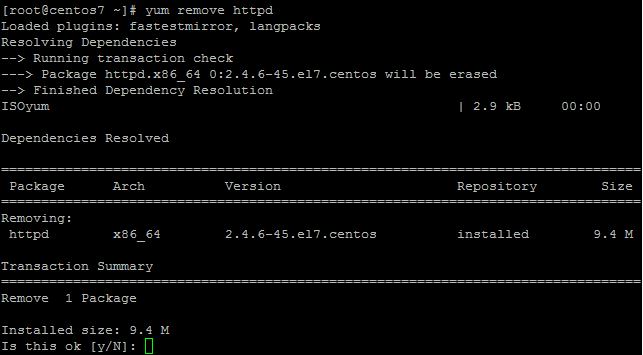

In versions prior to 1.9.2 this module installed and removed each package given to the yum module separately. When used with a loop: each package will be processed individually, it is much more efficient to pass the list directly to the name option.
Controlling how Ansible behaves: precedence rules. Collections in the Theforeman Namespace.  Collections in the T_systems_mms Namespace. Collections in the Servicenow Namespace. Collections in the Purestorage Namespace. Collections in the Openvswitch Namespace. Collections in the Netapp_eseries Namespace. Collections in the Kubernetes Namespace. Collections in the Junipernetworks Namespace. Collections in the F5networks Namespace. Collections in the Containers Namespace. Collections in the Cloudscale_ch Namespace. Collections in the Chocolatey Namespace. Collections in the Check_point Namespace. Virtualization and Containerization Guides. Protecting sensitive data with Ansible vault. In the next section, we’ll see how to use the subscription manager and register with RHEL. Usually, we use the disable option if we want to block a software package from upgrading. On the other hand, if the disable option is set, it won’t allow downloading the package. The URL mentioned in the repo file will be the source of these packages. When the enable option is set, YUM repositories can download, install, and upgrade packages. = repo: example =īase_persistdir = /var/lib/yum/repos/x86_64/6ServerĬachedir = /var/cache/yum/x86_64/6Server/example Loaded plugins: product-id, refresh-packagekit, subscription-manager
Collections in the T_systems_mms Namespace. Collections in the Servicenow Namespace. Collections in the Purestorage Namespace. Collections in the Openvswitch Namespace. Collections in the Netapp_eseries Namespace. Collections in the Kubernetes Namespace. Collections in the Junipernetworks Namespace. Collections in the F5networks Namespace. Collections in the Containers Namespace. Collections in the Cloudscale_ch Namespace. Collections in the Chocolatey Namespace. Collections in the Check_point Namespace. Virtualization and Containerization Guides. Protecting sensitive data with Ansible vault. In the next section, we’ll see how to use the subscription manager and register with RHEL. Usually, we use the disable option if we want to block a software package from upgrading. On the other hand, if the disable option is set, it won’t allow downloading the package. The URL mentioned in the repo file will be the source of these packages. When the enable option is set, YUM repositories can download, install, and upgrade packages. = repo: example =īase_persistdir = /var/lib/yum/repos/x86_64/6ServerĬachedir = /var/cache/yum/x86_64/6Server/example Loaded plugins: product-id, refresh-packagekit, subscription-manager 
To illustrate, let’s look at an example repository: # yum-config-manager -enable example\* Let’s have a glance at the commands we will utilize: $ yum-config-manager -add-repo For instance, suppose we have a default repository called redhat.repo located at /etc//redhat.repo. We use yum-config-manager to add repositories and enable them. The YUM repository configuration files are located in /etc//, which mainly includes a repo ID, a name, and the URL of the package repository.







 0 kommentar(er)
0 kommentar(er)
